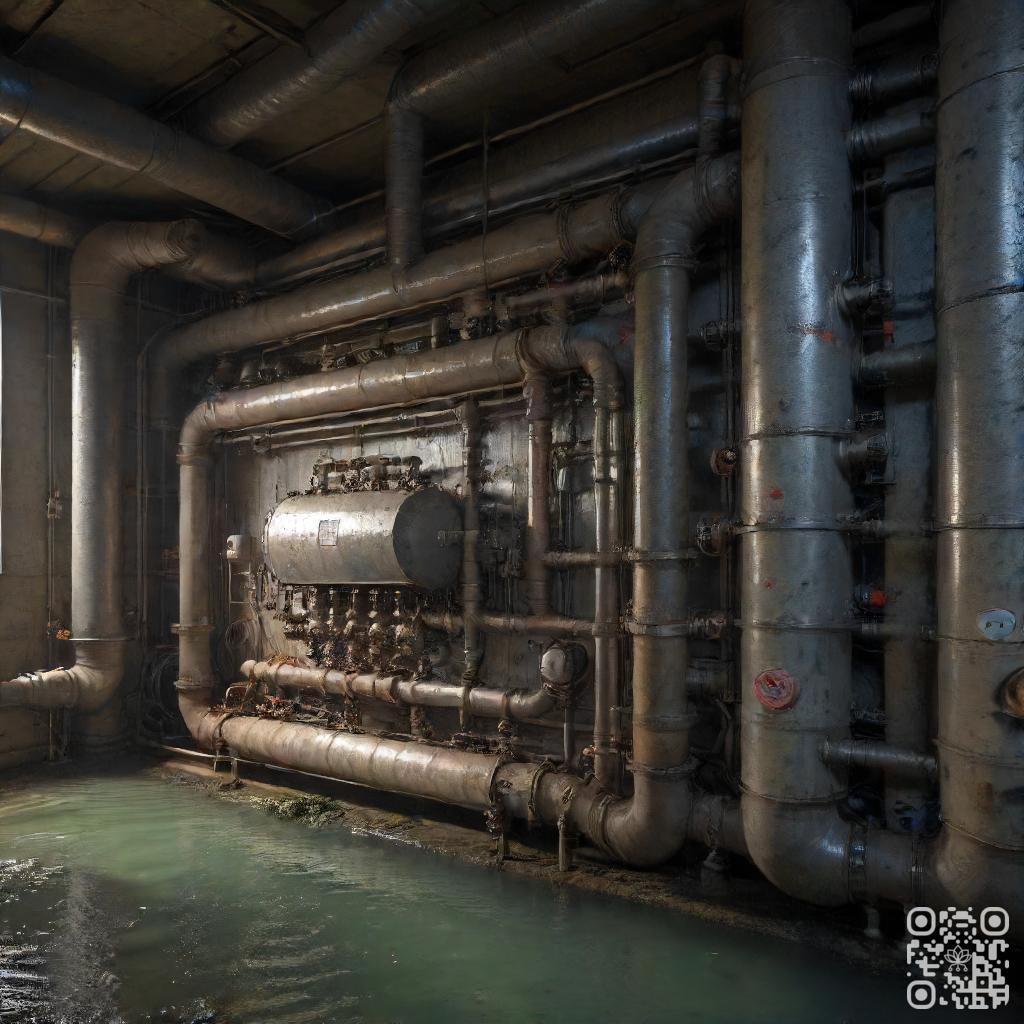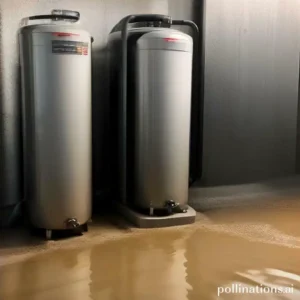
II. Sediment can also cause damage to the heat exchanger, leading to costly repairs or the need for a full replacement of the unit.
III. Regular maintenance, such as flushing the water heater and installing a sediment filter, can help prevent sediment buildup and extend the lifespan of the heat exchanger.
The efficiency of a water heater’s heat exchanger can be significantly affected by sediment buildup. As water flows through the heat exchanger, sediment particles can accumulate and create a layer of insulating material.
This layer acts as a barrier between the water and the heat exchanger, reducing heat transfer and decreasing overall efficiency. Regular maintenance and cleaning of the heat exchanger is crucial to prevent sediment buildup and ensure optimal performance.
By acknowledging sediment impact, homeowners can improve the efficiency of their water heaters and potentially save on energy costs.
What is Sediment Buildup in Water Heaters?
Sediment buildup in water heaters refers to the accumulation of solid particles, minerals, and debris in the tank of a water heater. Over time, these sediments settle at the bottom of the tank, creating a layer that can impact the performance and efficiency of the water heater.
Causes of sediment buildup in water heaters
There are several reasons why sediment buildup occurs in water heaters:
- Hard water: Hard water contains high levels of minerals such as calcium and magnesium. When the water is heated, these minerals can separate from the water and settle at the bottom of the tank.
- Corrosion: If the anode rod in the water heater is corroded, it can cause the tank to rust and deteriorate. The rust particles can contribute to sediment buildup.
- External debris: Dust, dirt, and other debris can find their way into the water heater, especially if there is a break in the water supply line. These particles can settle in the tank and contribute to sediment buildup.
How sediment affects the efficiency of water heaters
Excessive sediment buildup can have several negative effects on the efficiency of water heaters:
- Reduced heating efficiency: Sediment acts as an insulating layer, preventing the heat from transferring efficiently to the water. As a result, the water heater needs to work harder and consume more energy to heat the water to the desired temperature.
- Shortened lifespan: Sediment buildup can accelerate the deterioration of the tank and other components of the water heater. This can lead to leaks, malfunctions, and ultimately, a shorter lifespan for the appliance.
- Poor water quality: Sediment can affect the taste and smell of the hot water. Additionally, it may clog faucets, showerheads, and other fixtures, reducing water flow and causing inconvenience.
To prevent sediment buildup and maintain the efficiency of your water heater, regular maintenance is essential. Flushing the tank periodically, checking and replacing the anode rod when necessary, and using a water softener if you have hard water can help minimize sediment accumulation.
| Causes of Sediment Buildup | Effects of Sediment Buildup |
|---|---|
| Hard water | Reduced heating efficiency |
| Corrosion | Shortened lifespan |
| External debris | Poor water quality |
Signs of Sediment Buildup in Water Heaters
If you own a water heater, it’s important to be aware of signs that indicate sediment buildup. Sediment accumulation can lead to various issues that affect the performance and efficiency of your water heater. Apprehending these signs, you can take appropriate measures to address the problem before it escalates.
1. Decreased Hot Water Supply
One of the first signs of sediment buildup in a water heater is a decreased hot water supply. As sediment settles at the bottom of the tank, it takes up valuable space, reducing the amount of hot water that can be stored. This can result in shorter showers or running out of hot water altogether. If you notice a significant decrease in your hot water supply, sediment buildup may be the culprit.
2. Unusual Sounds from the Water Heater
If you hear popping, cracking, or rumbling sounds coming from your water heater, it could be a sign of sediment buildup. As water is heated, the sediment trapped at the bottom of the tank can harden and create a barrier between the heating element and the water. This causes the water to boil and create these unusual sounds. Ignoring these sounds can lead to damage to the tank or other components of the water heater.
3. Increased Energy Bills
Sediment buildup in your water heater can also lead to increased energy bills. As the sediment layer thickens, it acts as an insulator, preventing efficient heat transfer. This means that your water heater has to work harder and consume more energy to heat the same amount of water. If you notice a sudden increase in your energy bills without any other apparent reason, sediment buildup may be to blame.
4. Rusty Water
Another sign of sediment buildup is the presence of rusty water. As sediment accumulates, it can react with the metal interior of the water heater, causing corrosion. This can result in rust particles mixing with the water, giving it a brownish or reddish tint. If you notice rusty water when you turn on the hot tap, it’s a clear indication that sediment buildup has reached a significant level.
How to Prevent Sediment Buildup in Water Heaters
Water heaters are essential appliances in our homes, providing us with hot water for various purposes. Notwithstanding, over time, sediment buildup can occur within the water heater, leading to reduced efficiency and potential damage. To ensure optimal performance and prolong the lifespan of your water heater, it is crucial to take preventive measures against sediment buildup. Here are some effective methods:
1. Regular maintenance
Maintaining your water heater regularly is key to preventing sediment buildup. Schedule annual maintenance checks with a professional plumber who can inspect the unit, clean any existing sediment, and ensure all components are functioning correctly. This proactive approach can help identify and address any issues before they become major problems.
2. Flushing the water heater
Flushing your water heater on a regular basis is an excellent way to remove accumulated sediment. Start by turning off the power supply and cold water inlet valve. Attach a hose to the drain valve at the bottom of the tank and place the other end in a suitable drainage area. Open the valve and allow the water to flow until it runs clear, indicating that the sediment has been flushed out. Close the valve, remove the hose, and turn on the water supply and power.
3. Installing a water softener
Hard water contains high mineral content, which can contribute to sediment buildup in water heaters. Installing a water softener can help prevent the formation of scale and sediment. This device removes minerals like calcium and magnesium from the water, reducing their accumulation in the tank. By using a water softener, you can significantly reduce the risk of sediment buildup and prolong the life of your water heater.
4. Using a sediment filter
Another effective preventive measure is to install a sediment filter in the water supply line. This filter captures sediment and other particles before they enter the water heater, preventing them from settling in the tank. Regularly checking and replacing the filter as recommended by the manufacturer will ensure its continued efficiency in preventing sediment buildup.

How to Remove Sediment Buildup in Water Heaters
1. Turning off the water heater
Before you begin the process of removing sediment buildup in your water heater, it is essential to turn off the power supply. This will ensure your safety and prevent any accidents during the cleaning process.
2. Draining the water heater
Once the water heater is turned off, locate the drain valve at the bottom of the tank. Attach a hose to the valve and place the other end in a suitable drainage area or bucket. Open the valve to allow the water to flow out of the tank.
3. Flushing the water heater with a hose
With the water heater drained, it’s time to flush out the sediment buildup. Attach a garden hose to the cold water inlet valve and place the other end in a drain or outside area. Open the valve and let the water flow through the tank, effectively flushing out the sediment.
4. Refilling the water heater
After the flushing process is complete, close the drain valve and remove the hose. Turn on the cold water supply to refill the tank. Allow the tank to fill completely before turning the power back on.
Regular maintenance and sediment removal are crucial for the optimal performance of your water heater. By embracing these steps, you can effectively remove sediment buildup and extend the lifespan of your water heater.
| Step | Description |
|---|---|
| 1 | Turning off the water heater |
| 2 | Draining the water heater |
| 3 | Flushing the water heater with a hose |
| 4 | Refilling the water heater |

Benefits of Preventing and Removing Sediment Buildup in Water Heaters
Sediment buildup in water heaters can have negative impacts on their efficiency and performance. By taking preventive measures and regularly removing sediment, you can enjoy several benefits:
1. Improved Efficiency and Performance
Sediment buildup can hinder the heating process in water heaters. Over time, minerals and debris accumulate at the bottom of the tank, creating a layer that acts as an insulator. This insulation reduces the transfer of heat from the heating element to the water, resulting in decreased efficiency and longer heating times. By preventing and removing sediment buildup, you can ensure that your water heater operates at its optimal efficiency, providing you with hot water more quickly and effectively.
2. Longer Lifespan of the Water Heater
Sediment buildup can also lead to the corrosion of the tank and other components of the water heater. The minerals and debris in the sediment can react with the metal surfaces, causing rust and deterioration over time. This corrosion can weaken the tank and increase the risk of leaks or other damages. By preventing sediment buildup, you can extend the lifespan of your water heater, saving you from the hassle and expenses of premature replacements or repairs.
3. Reduced Energy Bills
When sediment accumulates in the water heater, it forces the heating element to work harder to heat the water. This increased workload translates to higher energy consumption and, subsequently, higher energy bills. By preventing sediment buildup and ensuring the efficient operation of your water heater, you can reduce your energy consumption and save money on your monthly bills.
To illustrate the benefits of preventing and removing sediment buildup, refer to the following table:
| Benefit | Description |
|---|---|
| Improved Efficiency and Performance | Ensures faster and more effective heating of water |
| Longer Lifespan of the Water Heater | Prevents corrosion and extends the life of the water heater |
| Reduced Energy Bills | Decreases energy consumption and saves money |
Bottom Line
Relating to water heater heat exchanger efficiency, sediment buildup can have a significant impact. Sediment accumulation can reduce the heat transfer rate, increase energy consumption, and shorten the lifespan of the water heater. Regular maintenance, such as flushing the tank and cleaning the heat exchanger, can help prevent sediment buildup and improve efficiency. Additionally, using a water softener or filtration system can reduce the amount of sediment and minerals in the water supply. By taking these steps, homeowners can ensure their water heaters operate efficiently and effectively, saving them money on energy bills and avoiding costly repairs or replacements.
Overall, sediment buildup is a common issue that can affect the performance of water heaters. Albeit, with proper maintenance and filtration, homeowners can mitigate the impact of sediment and ensure their water heaters operate at peak efficiency.
Read More:
1. Sediment Removal And Water Heater Scale Prevention
2. Sediment Impact On Water Heater Anode Degradation











